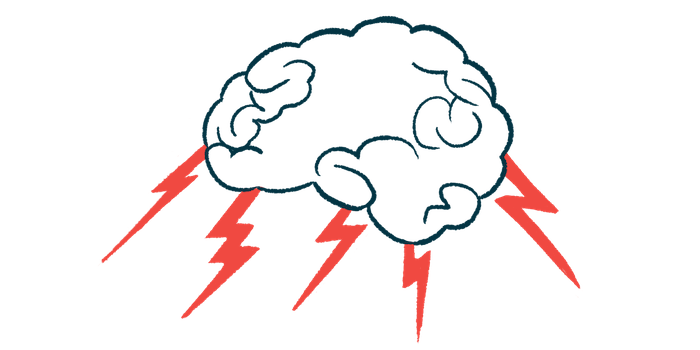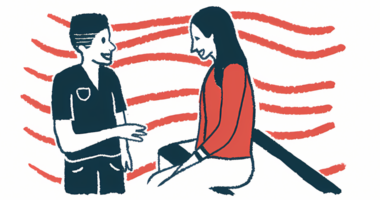Brain stimulation may offer promise for spasticity in MS: Study
But more work is needed to identify best approach for treatment

Noninvasive brain stimulation (NIBS) may offer promise for treating spasticity in multiple sclerosis (MS), but more work is needed to identify the best approach to use for patients, according to a new review study.
The studies under review generally indicated that a type of brain stimulation called repetitive transcranial magnetic stimulation, or rTMS, could ease spasticity — when muscles become abnormally tight, as commonly occurs in MS. However, evidence for another approach, known as transcranial direct current stimulation or tDCS, was more limited.
“Seven studies that used rTMS demonstrated a significant decrease in spasticity in PwMS [people with multiple sclerosis] after the intervention,” the researchers wrote, noting that “the remaining studies that provided tDCS did not show meaningful effects.”
The team said more clinical trials with long-term follow-up are needed to find an optimal approach.
The study, “Non-invasive brain stimulation for spasticity rehabilitation in multiple sclerosis: A systematic review of randomized controlled trials,” was published in the journal PM&R.
Looking for better treatments for spasticity in MS
Most MS patients experience muscle spasticity, characterized by abnormal tightness over time, which can lead to muscle stiffness and spasms that inhibit mobility. This difficult-to-treat MS symptom also can further exacerbate other disease manifestations, such as pain, bladder issues, and sleep problems.
Anti-spasticity medications are available, but their use typically is accompanied by significant side effects. Thus, shifting the focus toward other types of interventions, such as physical therapy or brain stimulation, may offer an alternative option for managing this symptom.
Noninvasive brain stimulation, dubbed NIBS for short, includes techniques such as rTMS and tDCS. In general, NIBS refers to interventions in which brain cells are stimulated via electrical currents administered to the scalp. In the case of rTMS, a magnetic field is used to stimulate the brain cells, whereas tDCS accomplishes this via low levels of direct electrical current.
It’s thought that this stimulation helps to induce neuroplasticity, the process by which the brain rewires in response to new inputs. This is believed to be of benefit for people with MS and other neurological diseases.
While a variety of studies have indicated that NIBS can safely benefit MS patients, its specific effects on spasticity warrant further investigation, according to researchers.
As such, a team from the Middle East University, in Jordan, conducted a systematic review of previous clinical trials that evaluated the effects of NIBS on spasticity-related outcomes in MS patients.
A total of nine randomized, controlled studies were included, which cumulatively involved 193 MS patients. Overall, the majority of participants (54.4%) were women, and the patients had a mean age of 43.3. Most (73.4%) had a relapsing-remitting disease course.
NIBS approaches included rTMS (seven studies) and tDCS (two studies), with the protocol and device used varying between studies.
Among the studies involving rTMS, four combined the NIBS approach with standard physical therapy, while three used brain stimulation alone. All seven studies found a significant decrease in muscle tone of the lower extremities — specifically the legs, ankles, and feet — with the NIBS intervention.
In the two tDCS studies, one did not find a significant change in lower extremity muscle tone. The other saw physiological evidence of less muscle contraction, but a clinician-rated measure of spasticity was not altered.
Exercise seen as key component of treatments for MS spasticity
Given the benefits of physical exercise in MS and in combination with rTMS — as well as its potential effects on neuroplasticity — researchers believe that combining tDCS with physical rehabilitation interventions “may have superior effects in reducing spasticity in PwMS than using tDCS alone.”
“Therefore, future research should focus on studying the impacts of combining NIBS and other physiotherapy treatments to verify our hypothesis,” the researchers wrote.
Neither approach was associated with side effects in the included studies.
The scientists emphasized that due to the small sample sizes and short follow-up times in a number of the trials, the results should be interpreted with caution.
Moreover, most selected studies were mainly focused on understanding the effects of NIBS on cognitive function, thus, the brain regions that were stimulated were not necessarily the best ones for targeting spasticity.
More research will be needed to understand the the NIBS parameters and stimulation protocols that are optimal for controlling spasticity in MS, and whether these approaches are beneficial in the long-term, the team noted.
“The most effective NIBS treatment protocol remains unclear,” the researchers wrote, noting that “further [randomized controlled trials] with long-term follow-ups are encouraged.”








